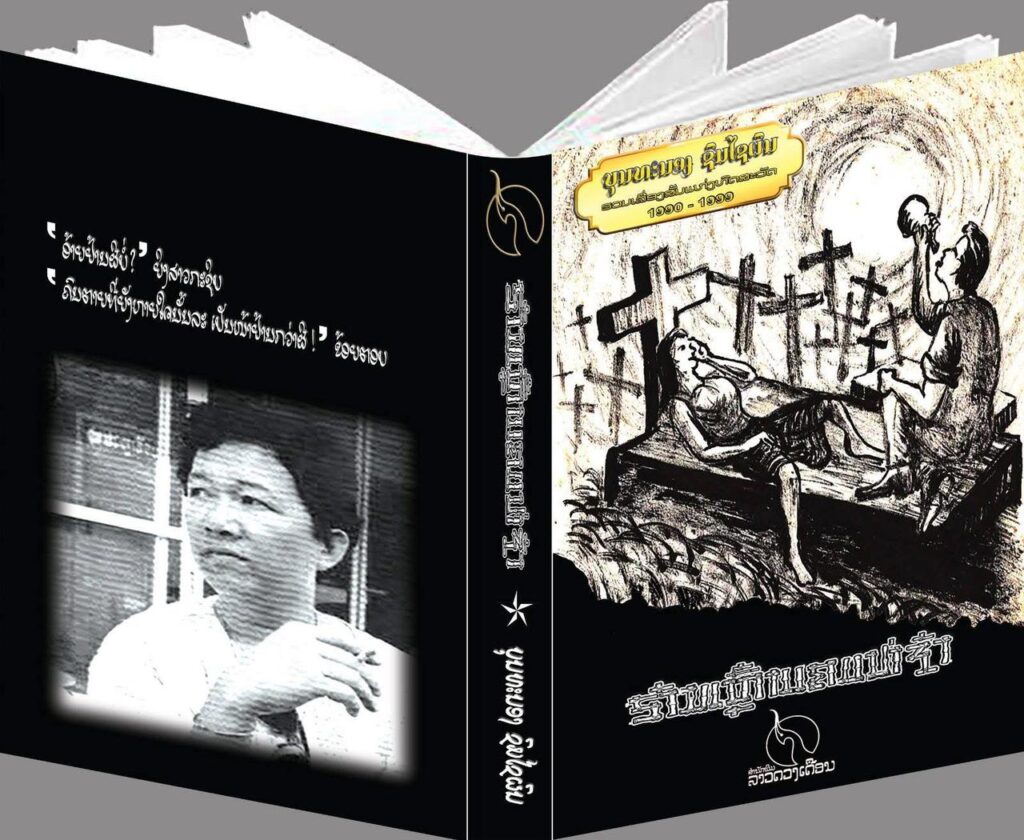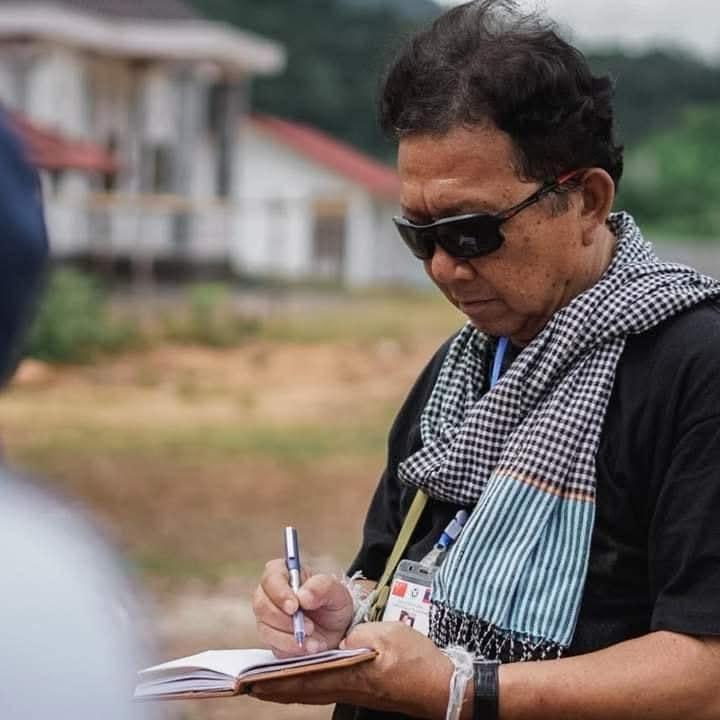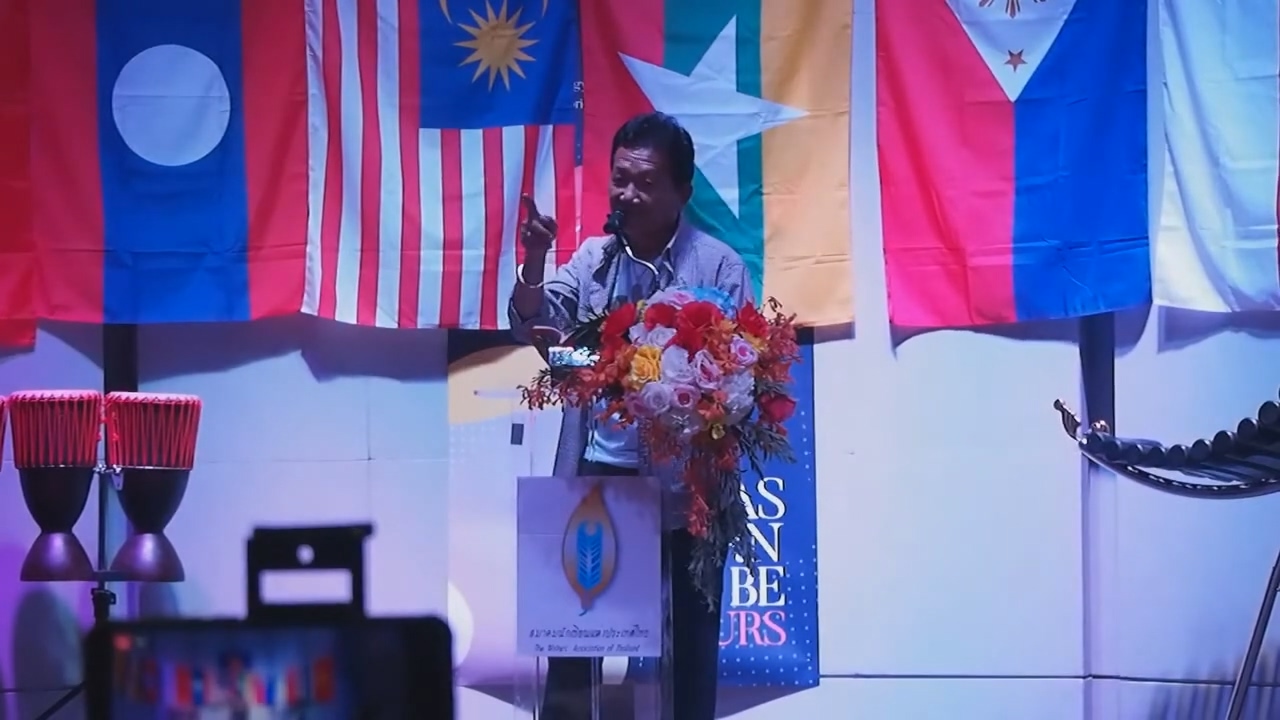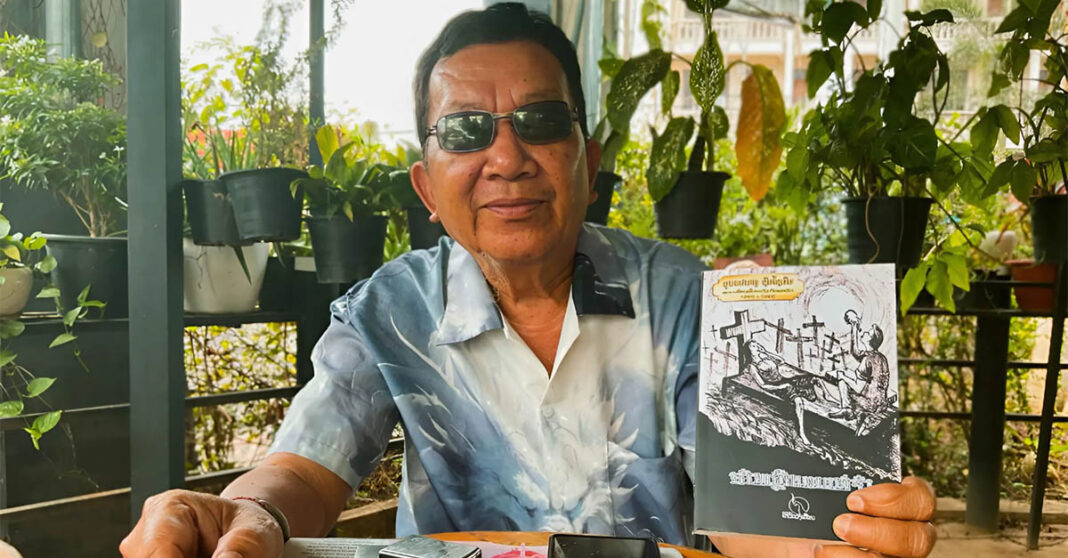An author holds the power to drive societal reform through fictional characters, raising awareness for those who cannot speak for themselves, becoming a voice for the voiceless, and advocating for transformation. That is what Lao writer Bounthanong “Nong” Xomxayphol, 72, believes.
“There’s inspiration all around us; it’s about how you shape it. Whether you’re aiming to spark change in society or celebrate someone’s heroic act, it all comes down to how you choose to tell the story.”
As the recipient of the 2011 SEA Write Award for short stories, Nong has embodied his role as a writer throughout his 50-year literary career. With 27 books published to date, Nong has consistently used his writing to spotlight social struggles and champion those in need.
What sets Nong apart is his unique approach to storytelling, drawing inspiration from real people he has met, their lived experiences, and the places he’s visited.

On 28 March, Nong released his new book, Liquor Shop by the Cemetery (Harn Lao Khaem Pa Saa), a collection of 31 short stories originally published in Lao newspapers between 1990 and 1999. The book also includes previously unreleased pieces, offering something new even for long-time followers. Each story highlights the hardships faced by villagers, particularly the underprivileged.
“This book serves as a love letter to those with power—to push them to initiate change,” said Nong, emphasizing his intention for the stories to be a call to action for those in leadership.
This collection also stands out for its honest look at both the light and dark side of human nature.
Nong delves into the gritty truths of everyday life—highlighting the struggle for survival, but also confronting uncomfortable themes such as corruption, deception, betrayal, and sexual desire.
One story follows a middle-aged woman who flees the city to open a liquor shop next to a cemetery, hoping to escape the scrutiny of authorities.
Another centers on a popular author who uses his fame to engage in morally dubious encounters under the guise of “consent pleasure.”
Then, a tale of a woman who, after losing three husbands, seduces young men to satisfy her own desires, only to be haunted by the jealous spirit of her most recent spouse, or so she believes.
“These stories not only portray how individuals endure life’s hardships but also offer an unflinching exploration of the darker, often suppressed, impulses that lurk within human nature,” Nong said.
Adding another layer of depth, each story is paired with original concept art drawn by Nong himself, along with a succinct takeaway.
While his stories focus on the lives of everyday people, Nong’s intended audience is not the general public.
“As strange as it may sound, I’m not hoping for tricycle drivers, low-ranked employees, or laborers to read my work,” Nong admitted. “But rather people like village chiefs, district or provincial governors, and those working in government.”
By targeting those in positions of authority, Nong hopes to open their eyes to the lived experiences of the people they serve, in hopes to potentially inspire policy changes that address real, on-the-ground issues.
Over the years, Nong has seen encouraging signs that his approach works. He believes his literary advocacy has had a real impact.
“I often get good feedback from government officers, who make up a large portion of my ‘fanclubs,’ especially when I travel outside the capital,” he said with a smile. “Sometimes they even treat me to drinks to show their appreciation for my work.”
A Life Rooted in Art

Nong’s passion for the arts blossomed early in life. In primary school, he was already drawing, writing poems, singing, and playing musical instruments.
“When I was 17, I would often write short stories for the school magazines,” he recalled.
However, this artistic passion did not align well with traditional academics. Struggling with subjects like math and science, Nong decided against continuing high school and instead enrolled in law school, though he never let go of his love for writing.
During this period, many of his stories were published in local newspapers, and at the age of 20, he self-published his first book “The Bright Side of Darkness” with a print run of 1,000 copies, marking the start of his professional writing career.
From Law to Literature
Nong’s law school journey was cut short in 1975, the year Laos declared independence and the institution, funded by the Soviet Union, was shut down.
Thanks to his skills in writing and art, Nong landed a position in the Department of Publishing under the Ministry of Information, Culture, and Tourism. There, he worked as a newspaper editor for six years.
“From then on, I jumped back and forth between newspaper publications, working as an editor while writing my own work during leisure time,” he said. Nong explained that being a writer in Laos is no easy feat; most writers need to juggle multiple jobs to survive while carving out time for personal projects.
Despite these challenges, Nong rose to prominence with two of his most acclaimed works: “Wash Blood with Blood” and “American Bones”. The former, his best-selling piece, explores the revolutionary ideals of Che Guevara, while the latter tells the story of American authorities returning to Laos to retrieve the remains of their fallen soldiers from the Vietnam War. American Bones focuses on the humanity of the Lao people, who welcome the so-called enemy in a gesture of compassion and understanding.
“These two books are particularly special to me,” Nong shared. “American Bones brought me a new level of popularity, while Wash Blood with Blood remains my proudest work.”
The latter sold 15,000 copies, making it his best-selling title, according to the 72-year-old writer.
“Young people back then really looked up to Che Guevara—they wore shorts and carried banners with his image during revolutionary missions.””
American Bones, first published in 1987, didn’t gain much attention until it was translated into Thai in 1992. That exposure helped Nong receive wider recognition and ultimately earned him the SEA Write Award.
The Southeast Asian (SEA) Writers Award, established in 1979, is presented annually to poets and writers from ASEAN countries. Though not every member state is represented each year, the award remains a prestigious honor across the region.
“Apart from the honor I received from the reward, it also came with a price of THB 70,000 (USD 2,089) and a free five-night at a luxurious hotel in Bangkok,” Bounthanong noted.
A Guiding Voice for Future Writers
As a literary veteran, Nong keeps a close eye on emerging Lao writers. He noted that there are fewer passionate writers today compared to the 1980s and 1990s.
“A lot of new writers, from what I’ve seen, only write to win awards,” he remarked. “If there’s one piece of advice I could give, it’s that we writers must write from our hearts. We need to dig deep into what we want to express and what kind of change we hope to inspire in society.”

Reflecting on American Bones, Nong emphasized that he never wrote it with accolades in mind.
“I simply wanted to show the empathy and kindness of Lao people, even toward those who once brought them suffering,” the author remarked.
“If your writing can stir something within you—any strong emotion—it will surely speak to the reader’s heart and when that happens, good things will follow naturally.”
Today, Bounthanong “Nong” Xomxayphol shows no signs of slowing down. He shared that he still writes every day, though not within the confines of his home.
“I still write daily, but not in the bedroom or any room inside the house, since I need to smoke to get my creativity flowing,” he said with a laugh. “Otherwise, my wife would kill me.”
Currently, the veteran author is immersed in two major projects: his next decade-spanning short story collection—similar in style to Liquor Shop by the Cemetery—and a new novel, with release dates yet to be decided.

Nong writes not just out of passion, but because he believes many still find value in his work.
“Although it’s a small group, my books are still popular among the elderly and monks—even some of the younger ones,” he said with a smile.
“My works are still featured on school textbooks, including the Lao language and literature subjects. Also, about 20 university students have even asked to include some of my stories in their theses.”
Despite his roots in traditional storytelling, Nong is not afraid to embrace modern platforms. He revealed that several printing houses have reached out to digitize his work and feature it in eBook libraries, an initiative he believes will resonate with the new generation of writers and readers who prefer digital formats.



